|
Möbius III - 2012 [sold] - A unique geometric sculpture, hand-made from beautiful fine-grained sandstone quarried at Glossop in Derbyshire.
This sculpture is for sale with or without a stand.
|
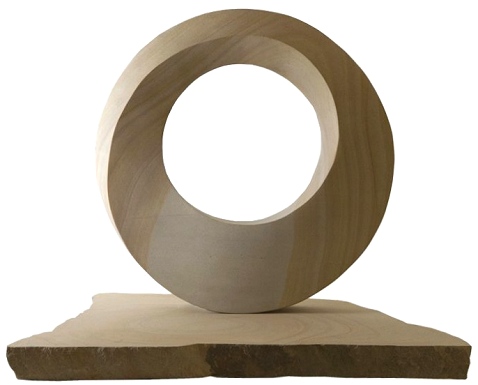 |
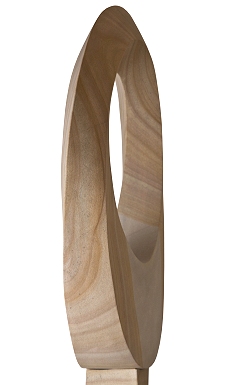 |
A twisted torus with a 31" diameter and a maximum thickness of 6".
|
Möbius III with Base and Pedestal. 2012 [sold]
|
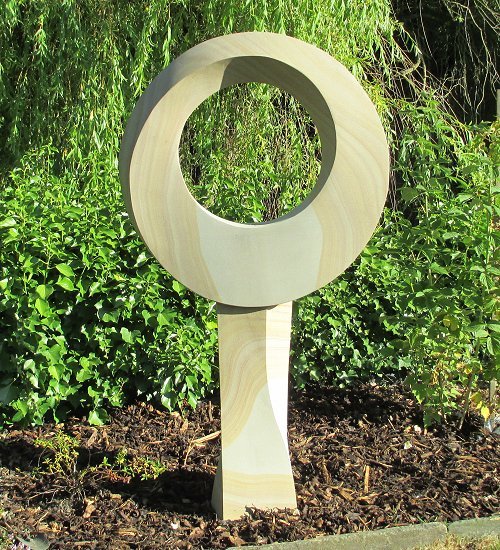 |
 |
Overall height: 58". This sculpture was designed to be set in concrete covered with pebbles, slate, paving or grass.
|
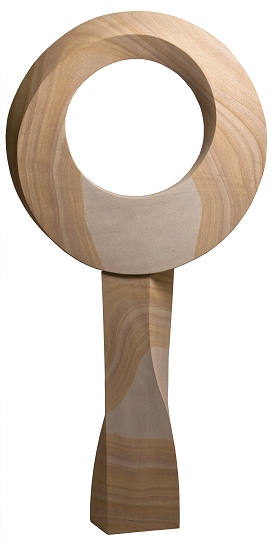 |
 |
Möbius III is the third of a series of sculptures exploring the topology of the Möbius strip in three dimensions:
The mathematician August Ferdinand Möbius first examined this strange form in the nineteenth century and gave us the Möbius strip. Take a strip of paper, twist it through 180°, turn it round into a torus and glue it together. Were you to trace a line along the middle of the strip, you would find that this strip of paper, which appears to have two surfaces, has in fact got only one continuous surface. Similarly, the Möbius strip has only one edge, not two as one might suppose.
The Möbius strip is a conundrum – what are the implications of warping a plane through three dimensions to our understanding of planes and dimensions? This series of Möbius sculptures of mine explores the conundrum further by starting to examine similar warpings of three dimensional cross-sections through space.
The cross-section of Möbius III’s torus is a parallelogram throughout, but instead of having four continuous surfaces and edges as one might expect, it has only one of each.
Twisting and warping the surfaces seems to transform stone from an inert material almost into an organic form.
The cross-section of the torus gradually transforms from a golden section rectangle at the bottom into a perfect vertical diamond at the top.
These are such simple transformations to make – but ones which surprise the eye and the touch. We are brought up in a built environment where stone surfaces are usually flat and their edges are usually square – these sculptures with their changing edge angles and warped surfaces challenge our subconscious preconceptions about stone forms by using a different logic of geometric construction.
This sculpture also incorporates the golden section, or divine proportion, phi into all of its proportions.
|
To read more about Möbius strips and solids, and to see four short video demonstrations of their properties, click the images below to follow the link:
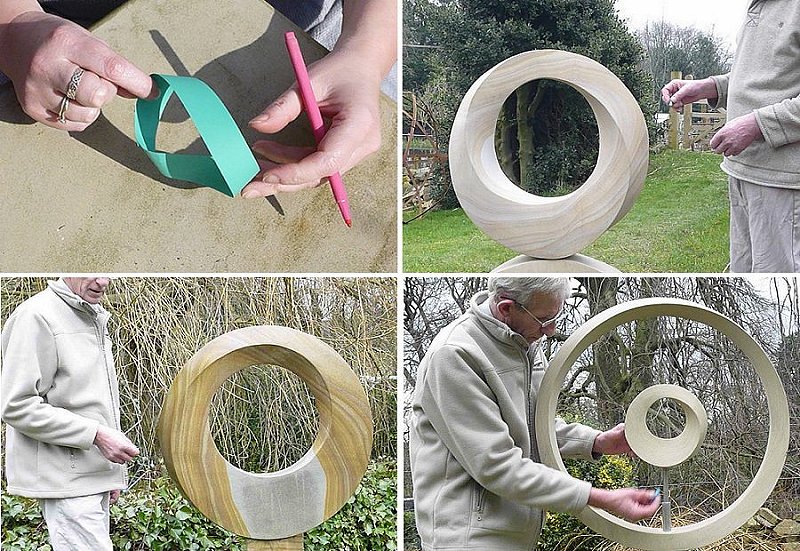
|
|